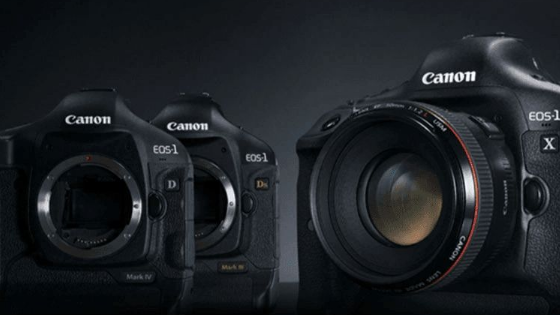Cameras have long been tools of creativity, capturing moments that last a lifetime. For most of us, a good camera might cost a few hundred or a couple of thousand dollars. But in the world of luxury collectibles, photography enthusiasts and collectors chase something far more exclusive: the world highest price camera. These rare pieces often transcend their role as gadgets and become works of art, cultural artifacts, or investments.
In this article, we’ll explore the most expensive cameras ever sold, what makes them so valuable, and why people are willing to spend millions for them.
What Defines the World Highest Price Camera?
The world highest price camera isn’t just about cutting-edge specifications or megapixels. Instead, rarity, historical value, and brand reputation play the largest role in determining price. While modern high-end cameras from brands like Hasselblad or Phase One cost tens of thousands, the truly record-breaking prices often come from vintage models, prototypes, or limited editions.
These cameras are not just for photography—they are collectibles comparable to rare paintings or classic cars.
Famous Cameras That Broke Records
Over the years, several cameras have earned the title of the world highest price camera at auctions. Here are some of the most notable:
1. Leica 0-Series No. 122 (Sold for $2.97 million)
In 2018, this prototype camera from 1923 sold at auction in Vienna for nearly $3 million, making it one of the most expensive cameras ever sold. Its rarity—it was one of only 25 prototypes—cemented its place in history.
2. Leica 0-Series No. 116 (Sold for $2.8 million)
Before No. 122 broke the record, another Leica 0-Series prototype fetched $2.8 million in 2012. Collectors were drawn to its pristine condition and significance as one of the earliest Leicas ever made.
3. Hasselblad Lunar Surface Camera (Apollo 15)
Not all high-priced cameras come from prototypes. A Hasselblad camera used on the Apollo 15 mission was sold at auction for nearly $1 million. Its value lies not only in rarity but in its direct connection to space exploration.
4. Gold-Plated Leica Luxus II
This gold-plated, crocodile-skin covered Leica camera sold for nearly $1 million. Beyond functionality, it represents luxury design in photography equipment.
Each of these examples shows how rarity and history drive the world highest price camera market.
Why Are Leica Cameras So Expensive?
A recurring theme in the history of the world highest price camera is the Leica brand. Known for pioneering portable 35mm photography, Leica cameras are synonymous with quality and prestige. Collectors value them for their craftsmanship and historical role in revolutionizing photography.
Prototypes and early models, particularly those from the 1920s, have become the holy grail for collectors. Owning one is not just about photography but about possessing a piece of cultural history.
Modern High-End Cameras
While vintage models dominate the auction world, modern technology also competes for the title of the world highest price camera in terms of retail cost.
- Phase One XF IQ4 150MP: Priced around $50,000, this medium format camera delivers unmatched resolution and is aimed at professionals in fashion and landscape photography.
- Hasselblad H6D-400c MS: This $47,000 camera offers multi-shot capture for astonishing detail, making it a favorite among studio photographers.
- Leica S3 Medium Format: Costing around $20,000, it continues the brand’s tradition of premium craftsmanship.
Though these don’t reach millions like auctioned collectibles, they represent the peak of modern photographic technology.
Factors That Influence Camera Value
Several elements contribute to making a device the world highest price camera:
- Rarity: Limited edition or prototype models with only a handful in existence.
- Historical Significance: Cameras linked to important moments in history (e.g., space missions, wars, or famous photographers).
- Brand Reputation: Leica, Hasselblad, and Phase One dominate due to their prestige.
- Condition: Well-preserved or fully functional vintage models fetch far higher prices.
- Luxury Appeal: Gold plating, exotic materials, or collaborations with designers add to value.
The Role of Auctions in Driving Prices
Auction houses like WestLicht in Vienna have played a huge role in defining the world highest price camera market. By bringing rare prototypes and historical models to global audiences, they create competitive bidding wars that push prices sky-high.
Collectors from around the world attend these auctions, ensuring that rare cameras fetch record-breaking amounts.
Will Modern Cameras Become Collectibles?
It’s an interesting question whether today’s high-end digital cameras will someday join the ranks of the world highest price camera. While mass production makes most modern cameras too common, limited editions or cameras linked to historical events (like space missions or wars) may become highly valuable decades from now.
It’s an interesting question whether today’s high-end digital cameras will someday join the ranks of the world highest price camera. While mass production makes most modern cameras too common, limited editions or cameras linked to historical events (like space missions or wars) may become highly valuable decades from now. For now, vintage film cameras dominate the collector’s world, but the digital era may produce its own rarities in time.
Conclusion
The concept of the world highest price camera goes far beyond specifications or image quality. These cameras are historical artifacts, luxury items, and investments rolled into one. Whether it’s a Leica prototype worth millions, a Hasselblad that went to the moon, or a modern Phase One costing tens of thousands, these devices reflect the intersection of art, history, and technology.
For collectors, they are treasures. For photographers, they are inspiration. And for the rest of us, they’re a reminder of how deeply photography influences culture.









